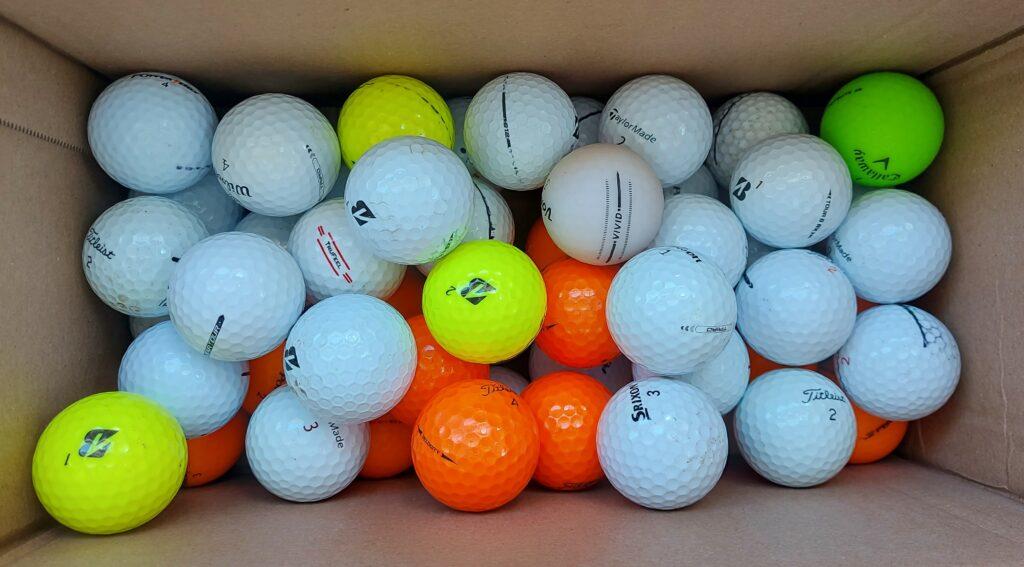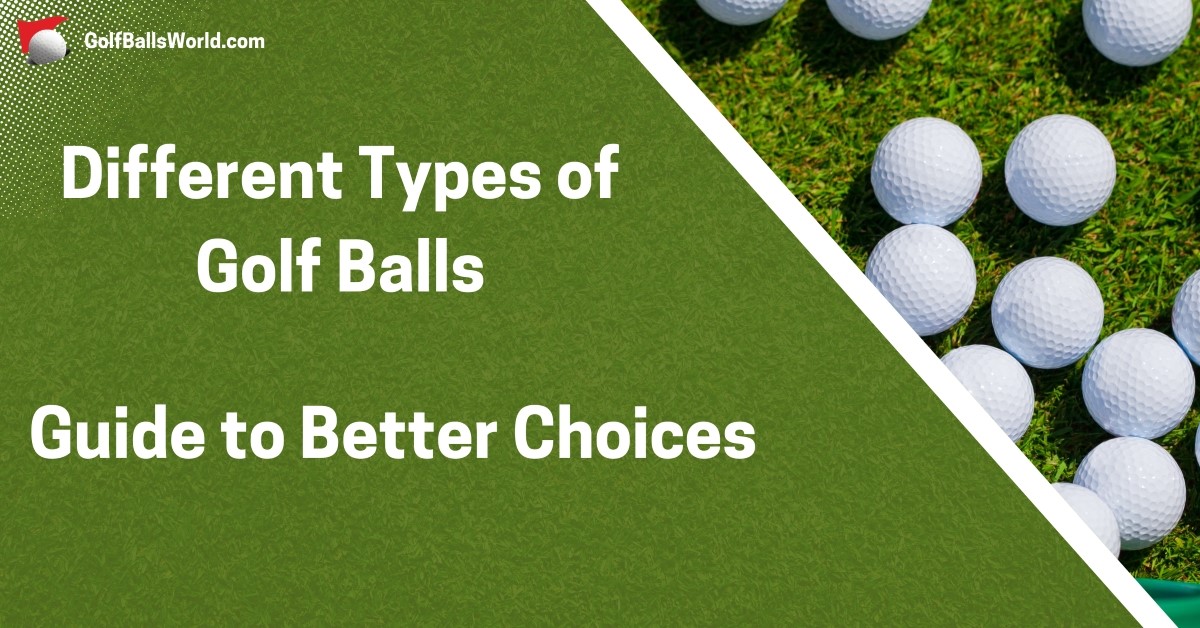Wherever you walk into a golf store, you can notice one thing. There are a lot of different types of golf balls on the shelves. For some, all of them might look the same. However, there are big differences often not visible to an average person. The main reason is, those differences are mostly on the inside of the balls.
Understanding the different types of balls is important for any golfer. Engineers make them with specific features to suit different playing styles, conditions, and skill levels. For beginners, choosing the right ball can mean added forgiveness and distance. For experienced golfers, it can be all about better control and precision. There are various categories of golf balls, from two-piece to multi-layers. Each category brings other characteristics and features to the table.
At the end of the day, what matters is that you choose the right ball for your game. Nevertheless, it is good that you learn what the main differences between balls are. This can help you make better choices as you improve your skill level. Let’s move on…
Two-Piece Golf Balls
Two-piece golf balls are the go-to choice for beginners and high-handicap golfers. They are made of a solid rubber core surrounded by a durable plastic cover, mostly made of ionomer. It is a combination that provides a balance between distance and durability. These balls are ideal for those who are still perfecting the swing. They are engineered for your shots to travel farther, even with slower swing speeds.
The durability of two-piece balls is another key feature. These balls can withstand rough treatment as beginners tend to hit more errant shots. The rough cover resists cuts and scuffs making it usable over multiple rounds. Additionally, two-piece balls are generally more affordable. That is beneficial since beginners might lose balls more frequently.
However, the simplicity of the design does mean reduced control and feel. That does not show anywhere as much as around the green. It is mostly due to the lack of spin because of the construction. Two-piece balls offer an excellent starting point by balancing performance and practicality. They also serve as a forgiving option while learning the ropes in the game’s early stages.
Multi-Layer Golf Balls
Multi-layer golf balls are typically a mid to low-handicap golfer choice. These balls have three to five layers, each designed to offer a specific benefit. The core is usually soft, providing the initial energy transfer for distance. Surrounding layers add varying degrees of firmness to enhance feel and control.
The outer cover of a multi-layer ball is made in most cases of urethane and some cases of other materials. It is often softer than the of a two-piece ball which provides a better feel on the clubface. This softness increases spin, which helps in controlling the ball on approach shots and around the green. Additionally, these balls are more suitable for shot shaping which is something experienced golfers might look for.
However, these advantages come at a cost. Multi-layer balls are more expensive than two-piece balls. Also, their softer covers can make them less durable. Therefore, they are more suitable for skilled golfers who are less likely to lose balls. For them, the additional cost is an investment for the performance benefits.
Low Compression Balls
Manufacturers make low-compression balls for players with slower swing speeds. The lower compression rating means the ball deforms more on impact. That creates more energy transfer, especially for players who swing the clubs with less power.
The increased energy transfer can result in greater distance. That is a key benefit for those who struggle to achieve length on their shots. Additionally, the softer feel or low compression balls can improve the experience on the green. It can offer better feedback and control during putting.
However, more advanced players with faster swing speeds might not get all out of these balls. They might find these balls too soft and may lack control over their shots. But for players focusing on improving the distance and enjoying the softer feel, these balls could be an excellent choice.

High Spin Golf Balls
These golf balls are engineered for players looking for more control over their ball flight and landing. Higher spin can especially be beneficial on approach shots and around the green.
The higher spin rate allows skilled players to execute shots with precision. It makes the ball stop quickly or even spin back on the green. This can be a significant advantage on firm and fast greens where stopping the ball is challenging.
However, mastering high-spin balls requires good technique. For players with a less consistent golf swing, these balls can exaggerate mistakes. Skilled players can take full advantage of these balls.
Golf Balls for Specific Conditions
Golf is a game played in varied conditions. Some golf balls are designed to perform better in specific environments. There are balls that due to their characteristics perform better in wet conditions. These can be a great choice on rainy days or courses with damp fairways.
Similarly, some perform better in cold weather. In this case, lower-compression golf balls might outperform the higher-compressed ones. When it is cold it gets harder to compress the higher-compressed balls. Therefore, lower-compressed ones are going to gain some distance. That is due to the fact it is easier to compress them and gain distance when it is colder.
Windy conditions are going to be suitable more for balls with a lower flight trajectory. With no wind, a ball with a higher flight trajectory might have an advantage. Depending on what weather conditions you play in the most, you could gain an advantage by choosing the right ball.
The Right Choice for Satisfaction
Remember one thing, your golf ball is the only piece of equipment you use on every single shot. Hence, the right choice can significantly improve your performance on the course. The right ball can offer you unique benefits tailored to your style of play and skill level.
Sometimes, the best you can do is experiment. Try a few different types of balls and observe how they affect your game. It is more than just the distance. There is feel, performance around the green, and how it aligns with your game strategy. Ultimately, when you find the right one, your golfing experience will become more satisfying than ever.
What type of golf ball do you prefer? Share below!
Related
- 5 Best Low Compression Golf Balls – Value for Money
- Best Golf Balls for Amateurs In 2024
- Best Golf Balls for Distance Control – The Helpful Guide
- Best Low Spin Golf Balls In 2024
- What Are the Best All Season Golf Balls

